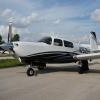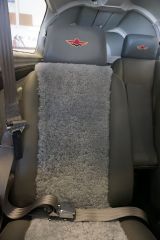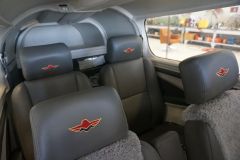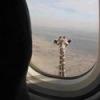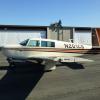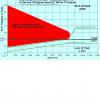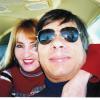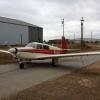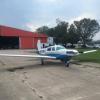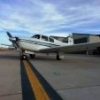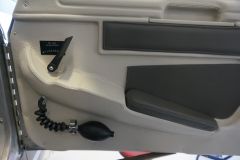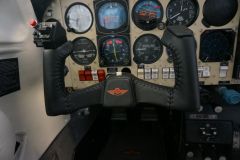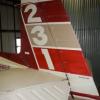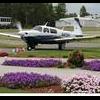Leaderboard
Popular Content
Showing content with the highest reputation on 05/22/2014 in all areas
-
Let's try this again: http://links.mkt3362.com/ctt?kn=1&ms=MjA4MTUzNzMS1&r=NDc4NjI1NTgxMAS2&b=0&j=MzIxMTM2OTc3S0&mt=1&rt=0 Yep, it works now. I'll go remove the bad link above.4 points
-
Sorry, I've been sweating it in the hangar removing the factory 1977 rotary cabin vents and building stuff to install 2005 Chevy Tahoe roof vents. It's like having a baby. You realize it's a lot more than you want to do but you're committed. We pulled of the slicks and put on Bendix mags at 83 hours. Believe it or not, I sold the slicks for 850$ which paid for the Bendix mags. I was out the core cost (125$ on eBay), the cost of the harness (200$) and the time to install (my labor, 5 hours). 7 hours later one quit. Points stuck closed. Kelly strikes again. Adjusted the points and roll on. The bendix mags have a slight improvement in LoP ops, they got a bit leaner before misfire. They also go the full 500hr between inspections without failure and the 500hr parts are cheap. No 250$ coils and 180$ condensers. This quickly turns into a 1000$ bill or 1500$ plus a ruined trip which I read about all too often. Also far too often is the call from the magneto shop doing the 500hr, it's gonna be a grand for the repairs or 900$ for a new mag, times two. I'm a big believer in old school big overbuilt magnetos that don't fail.3 points
-
2 points
-
I want to put in a plug for the good folks at Aerocomfort. I had them redo my interior - seats, sidepanels, carpet, headliner, the works. My local A&P removed all the parts and we drove them down to Aerocomfort in San Antonio so they could work their magic. I had the parts back in less than 3 weeks. My A&P loved the work that Aerocomfort did - said they have never seen an interior so well done, and that went back together so nicely. Pics are here if you're interested: http://mooneyspace.com/gallery/album/13924-new-interior/2 points
-
Hey - why the negativity? I was just last week in LA on business - and I tell you what - 15 minutes on an LA traffic freeway - and I would have loved to have had that thing.2 points
-
Dang it Byron! You could of at least let it get to the second page before you spoiled the party.2 points
-
2 points
-
This is probably heresy on a list like this. And of course many have their own favorite Mooney MSC they prefer for maintenance. But unless you intend to turn the PPI into an annual, there is no maintenance associated with an PPI. And as an inspection it only scratches the surface of full annual inspection yet may include items that an annual would not e.g., pulling a cylinder to inspect internals for corrosion for an engine that had been sitting or not flown much the last few years and closely examining the condition of the tank sealant. So personally any good knowledgeable Mooney MSC has the experience to look the plane and its maintenance logs over and then advise you. More important in IMHO than where you take it, is being pro-active about what the inspection will include. There is no official PPI inspection checklist, so no one does them exactly the same. Therefore its really important you go over the details of what and how thorough of an PPI you want to accomplish with whomever you select to do it. Better yet, go in with a list of items, such as Lance's list he posted as a starting point and review the Mooney annual checklist (downloadable from the factory website) to see a full range of possibilities. But that's still incomplete. Since you don't yet have any flying history with it like current owner its just as vital to have someone that knows that model well that can fly the plane and evaluate its avionics; especially its Autopilot which can't be checked on the ground. Seemingly little things like that can get very expensive to repair.1 point
-
December 2012: $3795 + $60 CB, cable, & misc supplies + 7 man hours (= $525) install. (Work was done while a lot of other panel work resulting in savings in install time.1 point
-
You might be able to glean something from this thread from a few years back... http://mooneyspace.com/topic/3270-the-cafe-measure-of-efficiency-mooney-style/ Personally, I've been known to take that path on occasion, but when all is said and done the old 80/20 rule still applies - you get 80% of the benefit with the first 20% of the effort. The last 20% requires the most of the effort. Any way you slice it, the results are seldom very dramatic and from a practical standpoint any gains can be nullified along the route by a simple ATC vector or request to slow down or speed up. All that being said, it is a fun mental exercise.1 point
-
1 point
-
What?!!! Enjoy yourself? Good plan. I don't sweat the small stuff either. I like a compromise of speed and efficiency. That's why I have a Mooney. I just level off somewhere between 6500 and 9500 on long flights, set the RPM to 2400, and lean to about 10 to 30F LOP. Then I sit back and enjoy the view. Bob1 point
-
1 point
-
1 point
-
1 point
-
A36 has an IO-520 of 285HP. A good friend of mine, CLH, has a 64 M20E with. 3-blade prop and it absolutely stomps the living hell out of my M20J on takeoff and climb, and matches it for cruise speed. Keeping that thing out of the 200 MPH IAS redline is a challenge. The A36s I have flown are more sedate on runway performance due to lower power/weight but get with the program in cruise. In cruise the A36 will do 165kt after level off and you look back to see 4 seats and all the other stuff. It's really the ultimate single piston airplane if you ignore the 17 GPH fuel flow. If you stick a Tornado Alley turbo on the thing, screw fuel flow. It's simply the ultimate piston single. 200 knots on 17 GPH and a 1400 LB useful load. Like a Rocket with two extra seats you can use.1 point
-
He taught me and it works. I showed a pilot this at the last Mooney safety clinic I taught at, he said that alone was worth the 800$. The quart of water I drained out of the left fuel tank at the end of the lesson was also worth 800$.1 point
-
Paint is done. Seats are done and turned out great. New plastic panels from Plane Plastics are sitting in the hangar. We have the entry and baggage door panels on, waiting for time to do the rest. Got busy. I'll try to snap some photos this weekend. Flying to Indy if weather permits. Our interior panels don't look anything like yours. Those are fantastic, truly great craftsmanship. With the new engine you are going to have an amazing machine when you are done, TKS and avionics issues aside.1 point
-
1 point
-
1 point
-
Also rember that VS/VV is GS dependent. So with these big boys scorching air molecules at 7 miles a minute, a 600FPM delta on either airplane going 7 miles a minute ground (for the sake of no-wind simplicity), puts you at a pitch attitude of 0.85 degrees nose up or nose down. That's less than one degree, for the math challenged. In other words, the damn pax farting cause themselves a more noticeable G-effect than 600fpm on an airliner at cruise. The media sucks almost as much as the pedestrians who buy their propaganda suck at life. Cowards shouldn't be allowed to vote. /stirpot1 point
-
1 point
-
1 point
-
1 point
-
1 point
-
My 15 year old daughter used to be afraid to fly on commercial planes. She would jump at any little bump, a change in the engine, or the gear coming down. That was cured after her first flight in the right seat of my plane. My point is it's all perspective. A 600 FPM descent sounds like a lot, but it is nothing to us. --Some might even call it a stabilized approach.1 point
-
For a few hours this week several rather ordinary pilots were Aviation Gods. I arranged a field trip for my Grand daughters 3rd grade class to the airport. Seven other friends of mine produced aircraft for them to see, sit in and ask questions about. There were no questions asked that these pilots could not answer, there were no questions asked in guile, just simple honest questions from children being exposed to the airport and General Aviation for the FIRST TIME! All but three of these children have have never flown. Only one of them had been to the airport. The airport management team were excellent hosts and supplied a Piper Cub airshow . One of the local RV builders also did circuits in the pattern. The State Highway Patrol arrived early in the three hour session and were a big hit. Three hours stretched into four. Our local MED FLIGHT crew were also big hits near the end of the day.The Blue Angels or Thunderbirds could not have gained more attention from these children. Can you imagine 103 children so quiet one could hear a pin drop? The Q&A between the children and the pilots was conducted in open air without any amplification. Do airplanes crash? How high have you flown? How fast will it go? Why do you fly? How are the flight surfaces connected to the yoke? Have you ever crashed? Do pilots get lost? Why are airplanes different? Why does that airplane have eyes? Have you flown through the Bermuda Triangle? This was all before the group was escorted onto the ramp to sit in the aircraft. The questions never ended and the pilots never failed to respond. Only the upturned faces of curiosity when an aircraft would appear in the pattern seemed to slow down the childrens efforts to become pilots in one day. Any aircraft that appeared was greeted with wild hand waving and ooohs and ahhhs as they magically moved through the air to a safe landing. Nothing I can say to describe the overwhelming satisfaction of seeing this with my own eyes! Thanks to all who made this possible! You know who you are, ....................Aviation Gods NO ONE can take that away from you once a child gives it.1 point
-
Interesting stuff guys! I admit I am partial to the writings of Mike Busch who planted this seed in my mind both in his old avweb articles and then more recently in his webinars where lower RPM was discussed among other things. I am all about efficiency, but again don't want to harm the engine. Interestingly in one of Mike's older webinars he made the case for LOP operations being easier to achieve at low RPM! On the work side, I flew a Beech 1900 (what an oustanding airplane) for about a year and then on to a different company where I fly a Brazilian turboprop. Before too much longer here, depending on the seniority game and what it will to do my schedule, I'll move up to a jet... though I have a soft spot in my heart for the turboprop flying and their capabilities.1 point
-
With an IO-550 the power charts put an increase fuel demand of .1 GPH per 100 RPM. So there is less HP loss do to friction. As far as LOP at low altitude if you are running LOP with an IO-360 I believe it is 14.9HP per 1 GPH. 60% of 200HP would be 8.05 GPH. Set your RPM where you want it and play with MP and FF to get 8.05 GPH, just make sure you are LOP. As long as your are 65% or less it shouldn't matter how far LOP you are, go to the sweet spot where it runs smooth. I'm no guru so proceed at your own risk:)1 point
-
N177MC, Your post got me to research this a bit. My 2005 O2 is stuck on software 0401.30 and from what I read the rev to add the data logging is in the 05xx.x range around 2010. Also, you merely need place a card in the top MFD slot and it automatically writes csv files to the SD card every so often. I will pull my card and see if any files are on it but I highly doubt it. I currently have a card in that slot with my custom check list. Mooney needs to come forth now that they are in operation and help update the GX fleet of avionics. Russ1 point
-
1 point

